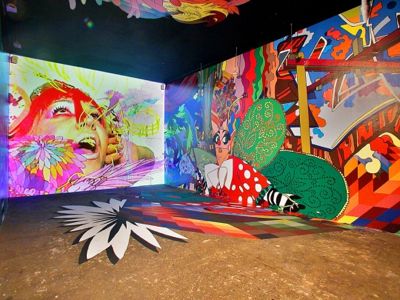Two questions that recently came up during the Art21 Educators panel at NAEA’s conference in NYC have got me thinking:
- How do we balance exploration of process, play & idea formation with technique and skill? I find that students get frustrated when they don’t have the skill to follow through with their ideas.
- How do you begin changing a traditional art department that is ALL SKILLS-BASED and get teachers on board?
Now let me tell you, there were a ton of good questions brought up at this particular session, and we will address a bunch in the coming weeks and months, but this particular set is quite popular right now so we might as well get into it.
Finding a balance between teaching specific skills and techniques with teaching about how to explore process in order to form and pursue ideas is not easy. If you teach in a culture (or department, or school, or district, or university…) that emphasizes skills and techniques as the “meat” of the curriculum, it’s probably a good idea to begin talking about the kinds of skills that everyone really considers “essential”. We all know it’s impossible to teach everything, even if you had classes for hours upon hours every day. What are the skills that the group feels are essential? This of course will vary from place to place and school to school, and it also has to be considered in context. My school, which offers lots of electives for high school students may very well come up with a different set of skills from another with different offerings, staff and students. But first, a frank discussion about the essential skills that should/could be taught is in order.
Once students have experience with these skills and actually practice them, even if they are bare-bones basic, it’s our responsibility to teach them to use these skills in order to explore ideas and important questions. Let’s face it, artists rarely if ever start works of art by saying something like, “I think I’ll make a piece about pointillism today.” But they may decide to utilize a stippling technique because it serves the idea they are exploring.
Similar to talking about essential skills that should be explored in a curriculum or art education program (and please keep in mind that I am streamlining a LOT here), educators then have to decide what kinds of big questions and themes can and should be explored. It all begins with discussions about how to do things differently and not accept the same old, same old “way we learned it.” I mean, while I certainly respect the way I learned about visual art growing up, I never really explored much more than representation until I got to college. And this really has to stop.
Should elementary-level art education emphasize skill building a little more than teaching students to grapple with ideas? Perhaps. But an elementary art education that is all about step-by-step projects is really teaching students how to follow directions and not necessarily how to be creative thinkers.
Should middle school art education build on skills learned, introduce new ones, and begin teaching students how to work with personally relevant themes and questions to drive exploration in the arts? Absolutely. Middle-level art curriculum that sticks with keeping students “busy” and steering clear of meaningful discussion, or themes, isn’t doing anyone any favors.
How can high schools and college programs begin balancing the teaching of important skills and working with big ideas? Talk with one another. Have the courage to ask, “How can we do this differently in order to better reflect how artists work today?” See the work being made today… together. Talk about it. Allow process a prominent place in the curriculum vs. solely emphasizing finished products.
It’s a lot to think about!
Finally… If you are a K-12 educator and interested in exploring questions like these, please consider applying for year 4 of the Art21 Educators program. Click here for more information. The application deadline has been extended to March 18th!
Until next week…
